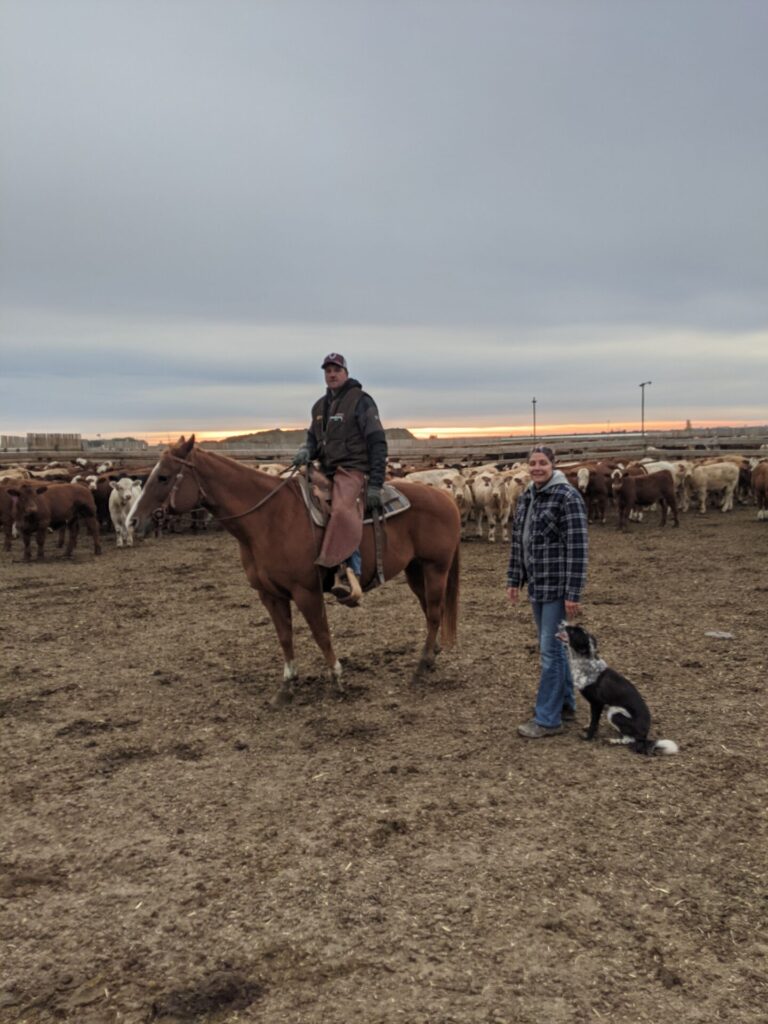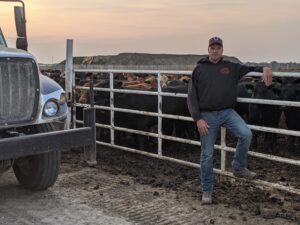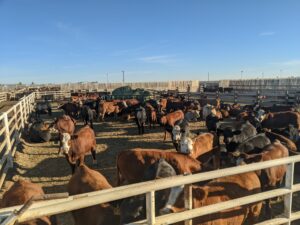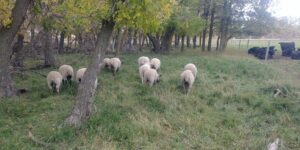Meet the Council: Modifications Worth Making
The Beef Cattle Research Council (BCRC) is made up of producer members from across Canada, appointed by each of the provincial beef organizations that allocate part of the Canadian Beef Cattle Check-Off to research. The number of members from each province is proportional to the amount of provincial check-off allocated to research.
The following is part six in a series to introduce you to this group of innovative thinkers that set BCRC’s direction by sharing practices, strategies, or technologies that they have integrated into their own operations. Read the past installments in this series.
Most Canadian beef cattle producers have goals they are working towards on their operation. Sometimes progress involves making major changes, while other times it involves slow and steady adjustments to everyday practices. These two council members have made modifications to improve and advance their operations.
Attention to Detail is Key to Success

Lyle Adams – Alberta
Lyle and his family own and operate 6A Cattle Company, which includes an 8,500 head finishing yard along with a 150 head cow herd near Picture Butte, Alberta. The Adams family purchased the feedlot nine years ago after it had been sitting empty for two years. Both Lyle and his wife Roxanne had previously worked in the feedlot industry, so the purchase seemed like a natural fit for their family. Lyle and Roxanne have four children with two involved in the day-to-day operations of the feedlot. Having family involved helps with labour but Lyle points out they also have a great crew working for them.
While they do feed some of their own calves, most of the feedlot is filled with custom cattle. Lyle takes a very hands-on approach as a manager, doing everything from pen riding to scraping pens. This allows him to pay attention to detail and make small changes which has been helpful in keeping cattle on feed and maintaining good relationships with those he feeds cattle for.
In a tight labour market, hiring and keeping good employees is always a worry, but Lyle says they are fortunate to have relatively low staff turn over. He attributes this to a number of factors, including treating their employees like family by recognizing achievements, celebrating them, providing variety in their day-to-day jobs and opportunities for further education and training.

A recent change Lyle has made to their operation is the addition of the Te Pari® dosing gun system at take-in and when doing mass processing. This system automatically takes the weight of the animal and adjusts the dosage accordingly, taking the guess work out of processing animals. It prevents underdosing and overdosing which helps reduce antibiotic resistance and saves money, which Lyle is then able to pass on to his customers. Making the change to this system hasn’t slowed down processing and it allows staff to be confident that they are administering the proper dosage every time. “It’s just the right thing to do,” says Lyle.

Along with the feedlot, the Adams manage 150 head of cattle year-round in a drylot. They calve in June which helps reduce the need for labour to check cows in cold weather, and reduces disease pressure in the herd. Calves are weaned in April, then backgrounded in the feedlot until July and sold as yearlings. Lyle intentionally targets this time of year as there are less cattle going to market during this period, resulting in a premium price for their calves. The main feedlot often empties out in the summer allowing them to focus on the cow herd as well as scrape everything out, make repairs, clean and set themselves up properly for the following year.
It’s not always the big changes that influence the success of a business. Attention to detail and doing the small things right are Lyle’s targets for his operation.
Increasing Diversification and Utilization

Trevor Sund – Manitoba
Trevor and his family own a mixed cattle operation near Woodlands, Manitoba, where they have had cattle on the land for 49 years. They also grain farm, and have some sheep and chickens. While they are in an area known for rain and good farmland, they also have plenty of bush land that is much more suitable to grazing cattle.
The cattle winter in the bush land which provides shelter and protection from the elements. In addition, the cattle are integral in helping to keep back shrub encroachment through grazing. “It also helps with manure management” says Trevor “Why haul manure if you can just let the cows do it themselves?” Since their home is heated with a wood burning stove, they also integrate this into the systems as the areas that are cleared while cutting firewood become the places they bed cows the following year. While cattle are out in the bush, they walk up to ¾ of a mile to water which they find helps keep the cows fit for calving season and has reduced calving difficulties.
They feed the cows twice a day with a combination of greenfeed hay bales that are rolled out for the cattle and then top dressed with additional supplement as needed. Calving occurs in late March and April at which time they move cows closer to home and shift to feeding in the evenings. This has resulted in more cows calving in the daylight hours making management easier for the family. “We started doing this thirty years ago while dad was hauling gypsum from the quarry into Winnipeg. We kind of figured it out by accident since nighttime was the only time he could feed his cows” says Trevor, “It was actually the year he stopped and we realized that calves were coming at all hours of the day. We learned our lesson and went back to the night feeding.” Calving this time of year works well with the rest of their operation as it gives them a dedicated time for calving before lambing starts in May and then seeding in late May and June.

Keeping a condensed calving season is important with the number of enterprises on their operation but due to the rough terrain and bush land pulling bulls in the summer can prove tricky. Instead, to keep their calving dates condensed, the bulls are run with the cows most of the year, only separating them closer to the start of calving. They set a pre-determined length for their calving season and then after the final date has passed, sell all cows that have not calved. This prevents their calving season from getting too long or cows falling behind in future years.
The Sund Family is located within an hour from Winnipeg which presents some unique opportunities when it comes to direct marketing. “We can sell eggs, lamb and beef direct to consumers in the city.” Trevor notes that up until now most of their sales have been through word of mouth but there is definitely room for expansion in that area.

Trevor has long term goals to further integrate their crop and livestock operations but fencing and access to water on the cropland are limiting factors. Because of the high value of land in their area they are working long term to get more use out of the land they have and hope to do so by utilizing crop land for more time than just the days it is growing crops. “We’re using that land for only 100 days and then the rest of the time it isn’t getting used. For most of that land there is another 60-80 days we could get out of it plus get some added fertility benefits.”
One thing the Sunds have been doing to increase utilization of their land is underseeding sweet blossom clover into some of their greenfeed. The clover helps to increase the feed quality as well as fixes nitrogen in the soil. Trevor says they notice the following year which fields have had the clover in them the year before and that they have observed less of a problem with ringworm and warts since introducing the clover into their rotation.
Having diversity in enterprises as well as increasing utilization on the land are important goals for the Sund family. “We have three kids who love to farm,” Trevor says when pointing out that diversification is how they will increase future income on the operation if their children choose a career on the farm.
Stay tuned for the next installment in this series when we introduce you to another group of Council members and the management strategies and practices implemented on their operations.
Sharing or reprinting BCRC posts is welcome and encouraged. Please credit the Beef Cattle Research Council, provide the website address, www.BeefResearch.ca, and let us know you have chosen to share the article by emailing us at info@beefresearch.ca.
Your questions, comments and suggestions are welcome. Contact us directly or spark a public discussion by posting your thoughts below.